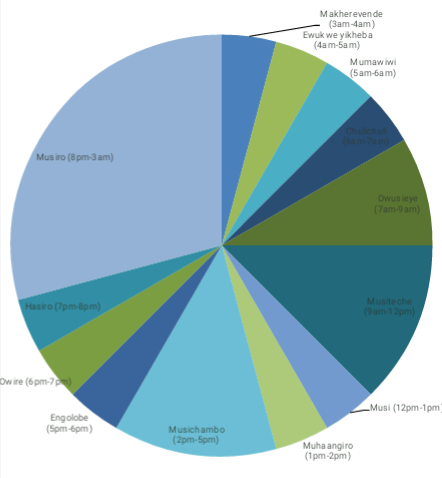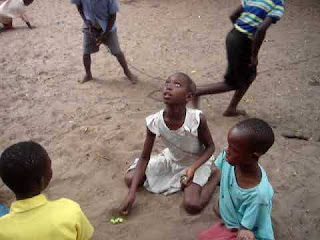ABANYALA BA KAKAMEGA: Time concept, Compass direction and Months.

A] TIME IN OLUNYALA (K) DIALECT OF LUHYA. Among Abanyala ba Kakamega, time is referred to as ebise . The twenty-four hours of the day is subdivided into the following time zones. Makherebeende- from 3am to 4am. It marks the start of the day. It is associated with the first cock-crow. Ewuikwe ni yikheba- from 4am to 5am. It is marked with the brightening of the horizon on the East before sunrise. It is associated with the second cockcrow. Mumawiiwi- from 5am to 6am. It is associated with the third cockcrow. Chulichuli- from 6am to 7am. It is associated with the first singing of the morning birds and sunrise. Children born at such time are called Wechuli or Machula. Owusieye- from 7am to around 9am. The time of early visiting, early women and children activities, and morning greetings of "Wusieye!' Musisanya- between 10am and 11am. Girls born at such hours are called Misenya. Musiteche (musi) from 11 am to 1pm. (Also used for daytime). It is associated with shadows bei...
